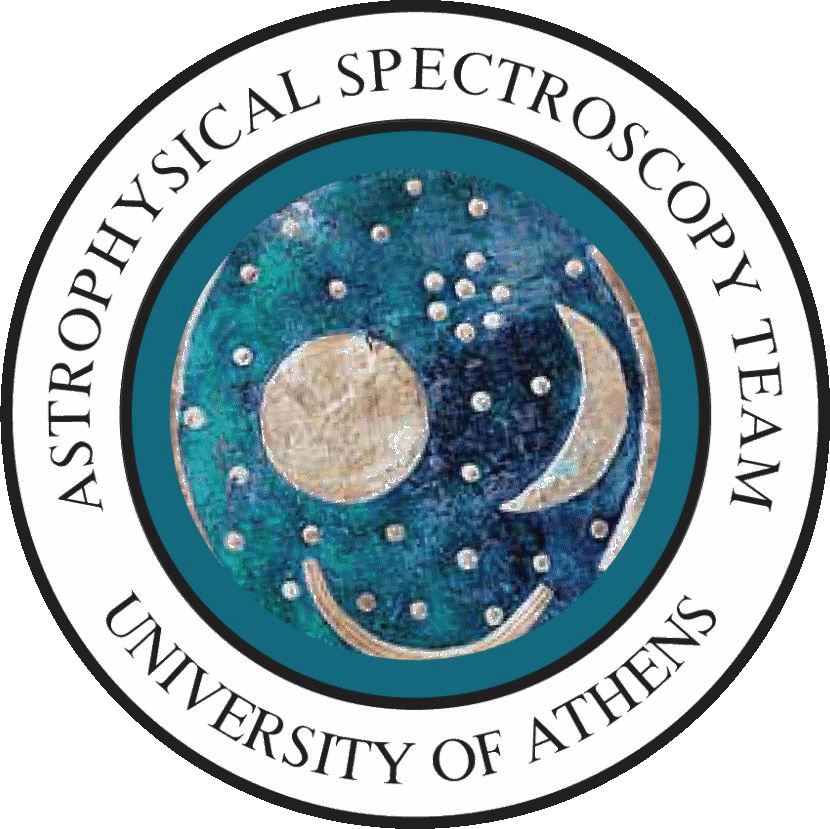1st workshop: astrophysical winds and disks
Similar phenomena in stars and quasars
Platamonas, Greece, September 3-8, 2009
Scientific rationale
A. Joint Session on Hot Emission Stars and Quasars
The aim of the workshop is to discuss current problems in investigation of absorption and emission lines in spectra of stars and quasars. There are two groups (one is in Belgrade and one in Athens) which have been collaborating in investigation of absorption/emission lines in hot stars and in quasars, aiming to find similarity and differences between emitting/absorbing regions. There are several open questions which will be discussed during workshop, as e.g. applicability of GR/RG model developed by Athens' group to the spectra of quasars with broad absorption lines, role of wind in quasars and hot stars - similarity and differences, etc.
During the workshop we are going to have one plenary session per day, discussing open problems (with one review lecture) and after that, mini-workshops (three-four people) concentrating to well defined problem (that is the main scope of a paper which should be at least in draft after end of workshop).
Beside these two groups, we are going to invite participants who can help us in particular problems, and are seen as collaborators in future.
Our scientific group has collaboration with scientists from seven different countries. It is essential that we all can meat in a common place in order to:
1. Discuss about the scientific results of our work until now, in order to organize the upcoming publications.
2. Discuss about the scientific problems on the spectroscopic study of the ionization gas around Hot Emission Stars and Quasars.
3. Discuss the further development of our collaboration and links with colleagues of other institutes working in the same research field
4. The presentation of the scientific work of the members of all the participating scientific groups, during the period September 2008 - September 2009.
Background of collaborations of Astrophysical Spectroscopy Teams of University of Athens and Astronomical Observatory of Belgrade
The Astrophysical Spectroscopy Team of the Faculty of Physics of the University of Athens collaborates with the respective team of Belgrade Observatory since 2003. During our collaboration, we did the following:
1. We were able to explain the origin of DACs phenomenon and to propose the SACs mechanism in order to explain the complex structure of the observed profiles of many spectral lines that are created in the environment of Hot Emission Stars. Our idea is based on the existence of independent density regions of matter that rotate around their own centers.
2. We observed that we can detect the same phenomenon in the spectra of Quasars and we proposed that the origin of this phenomenon is the same as in the case of Hot Emission Stars.
3. We constructed a new model (GR model) able to reproduce theoretically the observed complex spectral line profiles (SACs/DACs). In order to do so, we calculated a line function through the solution of the radiation transfer equation.
4. We calculated two new distribution functions (Rotation distribution and Gauss-Rotation distribution).
5. We constructed a first version of software, in order to reproduce the observed spectral lines and to calculate some physical parameters.
6. We applied successfully the GR model in a great number of spectral lines of Hot Emission Stars
7. We applied successfully the GR model in a great number of spectral lines of Quasars
B. Joint Session on History and Philosophy of Astronomy and Physical Sciences
Τhe scientific group of History and Philosophy of Astronomy and Physical Sciences at the University of Athens under the supervision of associate professor Dr. Efstratios Th. Theodossiou and the corresponding scientific group at the Observatory of Belgrade under the supervision of research professor Dr. Milan S. Dimitrijevic collaborate from 2000 till today on scientific subjects of four basic fields of research:
1. Ancient Greek scientific thought and modern astronomy
2. Science-Astronomy and Religion, and History of modern sciences.
3. Greek and Serbian astronomy in 19th and 20th Century
This long-term and fruitful collaboration of our scientific teams gave a long series of papers, which are listed in detail in Publications.
Future Program
In the workshop under the title: Astrophysical Winds and Disks - Similar phenomena in stars and quasars which will be held in Platamonas-Greece from September 3 to 8, 2009, we are programming to organize special Sessions in History and Philosophy of Astronomy and Physical Sciences. The contents of these Sessions will be:
1. A brief review of our common scientific collaboration.
2. Programming of specific actions in the subjects of our common research.
3. An extension of our collaboration with the corresponding groups of other countries, such as Romania, Bulgaria, Russia etc.
4. Final presentations and discussion in detail on some poster papers in order to enrich them and publish in international journals of History of Astronomy.
